Fairey Swordfish
| Swordfish | |
|---|---|
.jpg) | |
| Swordfish number LS326 in flight in 2012 | |
| Role | Torpedo-bomber |
| Manufacturer | Fairey Aviation |
| First flight | 17 April 1934 |
| Introduction | 1936 |
| Retired | 21 May 1945 |
| Primary users | Royal Navy Royal Air Force Royal Canadian Air Force Royal Netherlands Navy |
| Produced | 1936–1944 |
| Number built | 2,391 (692 by Fairey and 1,699 by Blackburn) |
|
| |
The Fairey Swordfish was a biplane torpedo bomber designed by the Fairey Aviation Company. Originating in the early 1930s, the Swordfish, nicknamed "Stringbag", was operated by the Fleet Air Arm of the Royal Navy, in addition to having been equipped by the Royal Air Force (RAF) alongside multiple overseas operators, including the Royal Canadian Air Force (RCAF) and the Royal Netherlands Navy. It was initially operated primarily as a fleet attack aircraft; during its later years, the Swordfish became increasingly used as an anti-submarine and training platform. The type was in frontline service throughout the entirety of the Second World War, but it was already considered obsolescent at the outbreak of the conflict in 1939.
Nonetheless, the Swordfish achieved some spectacular successes during the war; notable events included a flight of the type sinking one battleship and damaging two others of the Regia Marina (the Italian Navy) during the Battle of Taranto, and the famous crippling of the Bismarck, which contributed to her eventual demise. By the end of the war, the Swordfish held the distinction of having caused the destruction of a greater tonnage of Axis shipping than any other Allied Aircraft.[1] The Swordfish remained in front-line service until V-E Day, having outlived multiple aircraft that had been intended to replace it in service.
Development
Origins
In 1933, Fairey, having established a proven track record in the design and construction of naval aircraft, commenced development upon an entirely new three-seat naval aircraft intended for the twin roles of aerial reconnaissance and torpedo bomber.[1] Receiving the internal designation of T.S.R. I, standing for Torpedo-Spotter-Reconnaissance I, the proposed design adopted a biplane configuration and a single 645 hp Bristol Pegasus IIM radial engine as its powerplant. The company chose to initially pursue development of the project as a self-financed private venture while both customers and applicable requirements for the type were sought.[1] Development of the T.S.R. I was in parallel to Fairey's activities upon Air Ministry Specification S.9/30, for which the company was at one point developing a separate but broadly similar aircraft, powered by a Rolls-Royce Kestrel engine instead as well as employing a differing fin and rudder configuration.[2]
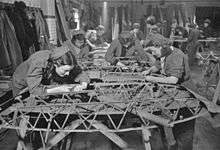
Significant contributions to the T.S.R.I's development came from Fairey's independent design work on a proposed aircraft for the Greek Naval Air Service, who had requested a replacement for their Fairey IIIF Mk.IIIB aircraft, and from specifications M.1/30 and S.9/30, which had been issued by the British Air Ministry.[3] Fairey promptly informed the Air Ministry of their work on the Greek order, whose interest had eventually waned, and proposed its solution to the requirements for a spotter-reconnaissance plane ("spotter" referring to the activity of observing and directing the fall of a warship's gunfire). In 1934, the Air Ministry issued the more advanced Specification S.15/33, which formally added the torpedo bomber role.[3]
On 21 March 1933, the prototype T.S.R. I, F1875, conducted its maiden flight from Great West Aerodrome, Heathrow, piloted by Fairey test pilot Chris Staniland.[3] F1875 performed various flight, including several while re-engined with an Armstrong Siddeley Tiger radial engine before it was refitted with the Pegasus engine again, was used to explore the flight envelope, and to investigate the aircraft's flight characteristics. On 11 September 1933, F1875 was lost during a series of spinning tests in which it became unable to recover, the pilot survived the incident.[3] Prior to this, the prototype had exhibited favourable performance, which contributed to the subsequent decision to proceed with the more advanced T.S.R II prototype, which had been specifically developed to conform with the newly issued Specification S.15/33.[3]
On 17 April 1934, the prototype T.S.R II, K4190, performed its maiden flight, flown by Staniland.[3] In comparison with the previous prototype, K4190 was equipped with a more powerful model of the Pegasus engine, an additional bay within the rear fuselage to counteract spin tendencies, and the upper wing was slightly swept back to account for the increase length of the fuselage along with other aerodynamic-related tweaks to the rear of the aircraft. During the ensuring flight test program, K4190 was transferred to Fairey's factory in Hamble-le-Rice, Hampshire, where it received a twin-float undercarriage in place of its original land-only counterpart; on 10 November 1934, the first flight of K4190 in this new configuration was performed.[3] Following successful water-handling trials, K4190 conducted a series of aircraft catapult and recovery tests aboard the battlecruiser HMS Repulse. K4190 was later restored to its wheeled undercarriage prior to an extensive evaluation process by the Aeroplane and Armament Experimental Establishment at RAF Martlesham Heath.[4]
In 1935, following the successful completion of testing at Martlesham, an initial pre-production order for three aircraft was placed by the Air Ministry; it was at this point that the T.S.R II received the name Swordfish.[5] All three pre-production aircraft were powered by the Pegasus IIIM3 engine, but adopted a three-bladed Fairey-Reed propeller in place of the two-bladed counterpart used on the earlier prototype. On 31 December 1935, the first pre-production Swordfish, K5660, made its maiden flight.[5] On 19 February 1936, the second pre-production aircraft, K5661, became the first to be delivered; the final pre-production aircraft, K5662, was completed in the floatplane configuration and underwent water-based service trials at the Marine Aircraft Experimental Establishment at Felixstowe, Suffolk.[5]
Production and further development
In early 1936, an initial production contract for 68 Swordfish aircraft was received, designated at the Swordfish I.[5] Manufactured at Fairey's factory in Hayes, West London, the first production aircraft was completed in early 1936 and the type entered service with the Fleet Air Arm (FAA) in July 1936.[5]
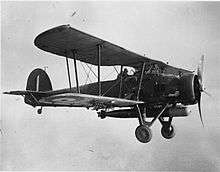
By early 1940, at which point the Second World War was in full swing, heavy wartime demands were being imposed upon Fairey, not only in the manufacture of the Swordfish but other types such as the new Fairey Albacore torpedo bomber.[6] As an effort to accommodate the demand, officials within the Admiralty approached Blackburn Aircraft with a proposal that manufacturing activity for the Swordfish be transferred to the company, who immediately set about establishing a brand new fabrication and assembly facility in Sherburn-in-Elmet, North Yorkshire.[7] Less than a year later, the first Blackburn-built Swordfish conducted its first flight. During 1941, Blackburn's Sherburn factory assumed primary responsibility for the fuselage, along with final assembly and testing of completed aircraft.[8]
Like many other wartime aircraft, efforts were made to disperse production and to employ the use of shadow factories to minimise the damage caused by Luftwaffe bombing raids.[8] Major sub-assemblies for the Swordfish were produced by a total of four subcontractors based in neighbouring Leeds, these were transported by land to Sherburn for final assembly. Initial deliveries from Sherburn were completed to the Swordfish I standard; from 1943 onwards, the improved Swordfish II and Swordfish III variant came into production and superseded the original model.[8] The Swordfish II carried ASV Mk.II radar and featured metal undersurfaces to the lower wings to allow the carriage of 3" rockets, later-built models also adopted the more powerful Pegasus 30 engine. The Swordfish III was fitted with centimetric ASV Mk.XI radar between the undercarriage legs, deleting the ability to carry torpedoes, and retained the Pegasus 30 powerplant.[8]
On 18 August 1944, production of the Swordfish was terminated; the last aircraft to be delivered, a Swordfish III, was delivered that day.[9] In total, almost 2,400 aircraft had been built, 692 having been constructed by Fairey and a further 1,699 by Blackburn at their Sherburn facility. The most numerous version of the Swordfish was the Mark II, of which 1,080 were completed.[10]
Design
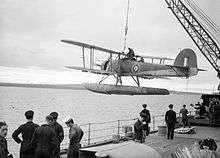
The Fairey Swordfish was a medium-sized biplane torpedo bomber and reconnaissance aircraft. The Swordfish employed a metal airframe covered in fabric. It utilized folding wings as a space-saving measure, which was useful onboard aircraft carriers. In service, it received the nickname Stringbag; this was not due to its biplane struts, spars, and braces, but a reference to the seemingly endless variety of stores and equipment that the type was cleared to carry. Crews likened the aircraft to a housewife's string shopping bag, common at the time and which could accommodate contents of any shape, and that a Swordfish, like the shopping bag, could carry anything.[11]
The primary weapon of the Swordfish was the aerial torpedo, but the low speed of the biplane and the need for a long straight approach made it difficult to deliver against well-defended targets. Swordfish torpedo doctrine called for an approach at 5,000 feet (1,500 m) followed by a dive to torpedo release altitude of 18 feet (5.5 m).[12] Maximum range of the early Mark XII torpedo was 1,500 yards (1,400 m) at 40 knots (74 km/h; 46 mph) and 3,500 yards (3,200 m) at 27 knots (50 km/h; 31 mph).[13] The torpedo travelled 200 feet (61 m) forward from release to water impact, and required another 300 yards (270 m) to stabilise at preset depth and arm itself. Ideal release distance was 1,000 yards (910 m) from target if the Swordfish survived to that distance.[12]
The Swordfish was also capable of operating as a dive-bomber. During 1939, Swordfish onboard HMS Glorious participated in a series of dive-bombing trials, during which 439 practice bombs were dropped at dive angles of 60, 67 and 70 degrees, against the target ship HMS Centurion. Tests against a stationary target showed an average error of 49 yd (45 m) from a release height of 1,300 ft (400 m) and a dive angle of 70 degrees; tests against a manoeuvring target showed an average error of 44 yd (40 m) from a drop height of 1,800 ft (550 m) and a dive angle of 60 degrees.[14]
After more modern torpedo attack aircraft were developed, the Swordfish was soon redeployed successfully in an anti-submarine role, armed with depth charges or eight "60 lb" (27 kg) RP-3 rockets and flying from the smaller escort carriers, or even Merchant Aircraft Carriers (MACs) when equipped for rocket-assisted takeoff (RATO). Its low stall speed and inherently tough design made it ideal for operation from the MAC carriers in the often severe mid-Atlantic weather. Indeed, its takeoff and landing speeds were so low that, unlike most carrier-based aircraft, it did not require the carrier to be steaming into the wind. On occasion, when the wind was right, Swordfish were flown from a carrier at anchor.[15]
Operational history
Introduction
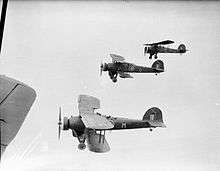
In July 1936, the Swordfish formally entered service with the Fleet Air Arm (FAA), which was then part of the RAF; 825 Naval Air Squadron became the first squadrons to receive the type that month.[5] The Swordfish began replacing both the Fairey Seal in the spotter-reconnaissance role and the Blackburn Baffin in the torpedo bomber role in competition with the Blackburn Shark in the combined role.[5] Initially, the Shark replaced the Seal in the spotter-reconnaissance squadrons and the Swordfish replaced the Baffin in torpedo squadron, after which the Shark was quickly replaced by the Swordfish. For nearly two years during the late 1930s, the Swordfish was the sole torpedo bomber aircraft equipping the FAA.[5]
By the eve of war in September 1939, the FAA, which had been transferred to Royal Navy control, had a total of thirteen operational squadron equipped with the Swordfish I.[5] There were also three flights of Swordfish equipped with floats, for use off catapult-equipped warships. Following the outbreak of the Second World War, a total of 26 FAA Squadrons would be equipped with the Swordfish. More than 20 second-line squadrons also operated the Swordfish for a wide regime of training and pilot tuition purposes.[16] During the early months of the conflict, the activities of the Swordfish were limited to mostly uneventful fleet protection and convoy escort missions.[9]
Norwegian Campaign
In Spring 1940, the first combat use of the Swordfish occurred during the Norwegian Campaign; on 11 April 1940, several Swordfish aircraft were launched from the aircraft carrier HMS Furious for the purpose of conducting a torpedo attack upon several German vessels that had been reported in anchor at Trondheim. Upon their arrival, the aircraft only encountered two enemy destroyers at Trondheim; during the ensuing attack upon the vessels only one hit was recorded as being attained; the engagement holds the distinction of being the first attack of the war to be conducted by torpedo-carrying aircraft.[9]

On 13 April 1940, a Swordfish launched from HMS Warspite spotted fall of shot and radioed gunnery corrections back to the ship during the Second Battle of Narvik.[9] A total of nine German destroyers were sunk or scuttled, one of which had been bombed by Swordfish that had been launched from the Warspite, without any losses experienced on the British side. The German submarine U-64 was also spotted by a Swordfish and performed a dive-bombing attack upon it, scoring a direct hit and quickly sinking the submarine; this was the first U-boat to be destroyed by an FAA aircraft during the war.[17]
Following the Second Battle of Narvik, Swordfish continually attacked enemy targets in the vicinity of Narvik for two weeks, bombing ships, land facilities, parked and enemy aircraft.[18] During this time, anti-submarine patrols and aerial reconnaissance missions were also flown, despite the challenge imposed by the combination of challenging terrain and inhospitable weather conditions, the latter of which having been amplified by the type's open cockpit. For many Swordfish crews, the missions flown during the Norwegian Campaign were their first active combat missions, and often involved other firsts, such as nighttime landings upon aircraft carriers.[18]
Home front
During early 1940, Swordfish aircraft of 812 Squadron under the operational command of RAF Coastal Command commenced an aerial campaign against continental enemy-held ports along the English Channel.[18] The aircraft were routinely sortied to deploy naval mines near such harbours; a task was most challenging due to the limitations of the aircraft and the precision navigation skill involved. To attain the range often necessary to reach some naval facilities, additional fuel tanks were installed in the crew area and the third crew member was left behind.[18] Other RAF fighters often supported these activities, providing a degree of aerial cover where possible and occasionally conducting counterattacks upon enemy air bases.[19]
The intensity of Coastal Command's Swordfish operations was drastically increased following the German invasion of the Low Countries, expanding to involve four Swordfish-equipped squadrons. Typically flying from Detling, Thorney Island, North Coates and St Eval, Swordfish crews were dispatched to strike strategic targets off the coasts of Netherlands and Belgium on daylight raids, during which they were typically subjected to heavy anti-aircraft fire and interception by Luftwaffe fighter aircraft.[18] Night time bombing raids were also conducted, attacking oil installations, power stations, and aerodromes.[18] After the unsuccessful Battle of France and the signing of the French Armistice of 22 June 1940, Swordfish focused their activities against ports that were viewed as useful to a potential German invasion of the United Kingdom, which typically involved spotting for naval bombardments of such facilities as well as conducting security patrols.[18]
In February 1942, the shortcomings of the Swordfish were starkly demonstrated during a German naval fleet movement known as the Channel Dash. Six Swordfish led by Lieutenant Commander Eugene Esmonde sortied from Manston to intercept the battleships Scharnhorst and Gneisenau as they traversed the English Channel towards Germany.[20] When the Swordfish formation arrived and commenced an initial attack run coming astern of the ships, the Swordfish were intercepted by roughly 15 Messerschmitt Bf 109 and Messerschmitt Bf 109 monoplane fighter aircraft; the aerial battle was extremely one-sided, quickly resulting in the loss of all Swordfish while no damage was achieved upon the ships themselves.[20] The lack of fighter cover was a contributing factor for the heavy losses experienced; only ten of eighty-four promised fighters were available. Thirteen of the eighteen Swordfish crew involved were killed; Esmonde, who had previously led an attack on Bismarck, was awarded the Victoria Cross posthumously.[20]
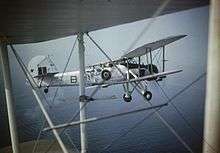
The courage of the Swordfish crews was noted by commanders on both sides: British Vice-Admiral Bertram Ramsay later wrote "In my opinion the gallant sortie of these six Swordfish aircraft constitutes one of the finest exhibitions of self-sacrifice and devotion to duty the war had ever witnessed"; German Vice-Admiral Otto Ciliax remarked that "the mothball attack of a handful of ancient planes, piloted by men whose bravery surpasses any other action by either side that day."[21] As a result of the performance of the Swordfish in this incident, the type was promptly withdrawn from the torpedo-bomber role; in its place, the Swordfish was more frequently tasked with anti-submarine duties instead. Armed with depth charges and rockets, the type soon proved to be a capable submarine killer.[20]
In the anti-submarine role, the Swordfish pioneered the naval use of air to surface vessel (ASV) radar; the aircraft holds the distinction of being the first such implementation upon carrier-borne aircraft, allowing the Swordfish to effectively locate surface ships at night and through clouds.[22] As early as October 1941, the Swordfish was flying operational missions using the ASV radar.[20] On 21 December 1941, a Swordfish based in Gibraltar located and sank a U-boat, the first such kill to be achieved by an aircraft during nighttime. On 23 May 1943, a rocket-equipped Swordfish destroyed German submarine U-752 off the coast of Ireland, the first kill achieved with this weapon.[20]
Atlantic operations
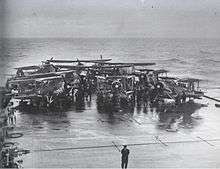
In May 1941, Swordfish participated in the pursuit and sinking of the German battleship Bismarck. On 24 May, nine Swordfish from HMS Victorious conducted a late night sortie against the Bismarck; under deteriorating weather conditions, using ASV radar, the flight were able to spot and launch an attack upon the ship, resulting in a single torpedo hit being achieved but this only caused minor damage.[23][24] The torpedo damage sustained to the Bismarck was credited with slowing the ship, making it easier for her to be located and for other friendly forces to catch up, despite its efforts to evade pursuit.[25]
On 26 May, Ark Royal launched two Swordfish strikes against Bismarck. The first of these failed to locate the ship. The second strike was more successful, scoring three hits on their attack, one of which jammed the ship's rudders at a 15° port helm on position.[26] This damage made Bismarck unmanoeuvrable and unable to escape to port in France; it sank after intense Royal Navy attack within 13 hours.[20] The low speed of the attacking aircraft may have acted in their favour, as the planes were too slow for the fire-control predictors of the German gunners, whose shells exploded so far in front of the aircraft that the threat of shrapnel damage was greatly diminished. At least some of the Swordfish flew so low that most of Bismarck's flak weapons could not depress enough to hit them.[27]
Throughout 1942, the Swordfish was progressively transferred from the Royal Navy's fleet carriers as newer strike aircraft, such as the Fairey Albacore and Fairey Barracuda, were introduced.[20] In the submarine-hunter role, the Swordfish made critical contribution to both the Battle of the Atlantic, detecting and destroying the roaming U-boat packs that preying upon merchant shipping between Britain and North America, and in support of the Arctic convoys which delivered supplies from Britain to Russia.[20] In addition to deploying depth charges on located submarines, Swordfish would guide destroyers onto their positions to coordinate attacks against them. On one such convoy, Swordfish on board the escort carrier HMS Striker and HMS Vindex flew over 1,000 flight hours conducting anti-submarine patrols over in a ten-day period.[20]
One of the more innovative implementations of the Swordfish was its use in combination with merchant aircraft carriers ("MAC ships"). These were twenty civilian cargo or tanker ships modified to carry three or four aircraft each, on anti-submarine duties with convoys; three of these vessels were Dutch-manned and several Swordfish of 860 (Dutch) Naval Air Squadron were typically deployed on board. The others were manned by pilots and aircrew from 836 Naval Air Squadron, at one time the largest squadron operating the type, being equipped with a total of 91 aircraft.
Mediterranean operations
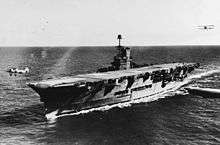
On 14 June 1940, shortly following Italy's entry into the conflict, nine Swordfish of 767 Naval Air Squadron stationed in Hyeres, Provence-Alpes-Côte d'Azur, France took off and conducted the first Allied bombing raid upon Italian soil.[28] Four days later, 767 Squadron relocated to Bone, Algeria before being split, the training elements returning to Britain while the operational portion proceeded to RAF Hal Far on Malta, where it was re-numbered as 830 Naval Air Squadron. On 30 June, operations re-commenced with an opening night raid upon oil tanks at Augusta, Sicily.[28]
On 3 July 1940, the Swordfish was one of the main instruments during the Attack on Mers-el-Kébir, a preemptive attack by the Royal Navy upon the French Navy fleet stationed at Oran, French Algeria to prevent the vessels falling into German hands.[28] 12 Swordfish from 810 and 820 Naval Air Squadrons launched from the aircraft carrier HMS Ark Royal and conducted three sorties of attacks upon the anchored fleet. The torpedo attack, which crippled the French battleship Dunkerque and damaged other vessels present, demonstrated that capital ships could be effectively attacked while in harbour; it was also the first time in history that the Royal Navy had won a battle without the use of gunfire.[28]
Shortly following the Mers-el-Kébir attack, a detachment of three Swordfish were sent to support British Army operations in the Western Desert, in response to a request for torpedo aircraft to destroy hostile naval units operating off the coast of Libya.[28] On 22 August, these three aircraft successfully destroyed two U-boats, one destroyer, and a replenishment ship present in the Gulf of Bomba, Libya, using only three torpedoes.[29]
On 11 November 1940, Swordfish flying from HMS Illustrious performed a significant strike operation, known as the Battle of Taranto, against the Italian Navy.[30] The main fleet of the Italian Navy was based at Taranto, Southern Italy; in light of the success of the earlier attack upon the French Navy at Mers-el-Kébir, members of the Admiralty sought another victory under similar conditions. Prior to the attack, the Royal Navy had conducted extensive preparations for an attack upon Taranto, with some planning having taken place as early as 1938, when war between the European powered had already seemed inevitable.[30] Regular aerial reconnaissance missions were flown to gather intelligence on the positions of specific capital ships, and Swordfish crews were intensively trained for night flying operations, as an undetected aerial attack during the night raid had been judged to be the only effective method of reasonably overcoming the defences of the well protected harbour and to strike at the fleet while at anchor there.[30]
Originally scheduled for 21 October 1940, the Taranto raid was delayed until 11 November 1940 to allow for key reinforcements to arrive and other commitments to be met.[30] The aerial attack started with an initial volley of flares being deployed by Swordfish aircraft to illuminate the harbour; after which, the Swordfish formation commenced bombing and torpedo runs. Due to the presence of barrage balloons and torpedo nets restricting the number of suitable torpedo-dropping positions, many of the Swordfish had been armed with bombs and performed a synchronised attack upon the cruisers and destroyers instead.[30] The six torpedo-armed Swordfish succeeded at heavily damaging three of the battleships. In addition, two cruisers, two destroyers and other vessels were damaged or sunk.[31] The high manoeuvrability of the Swordfish was attributed as why the aircraft successfully evaded intense anti-aircraft fire and performed accurate strikes upon the Italian ships.[24] The Battle of Taranto had firmly established that naval aircraft were independently capable of immobilising an entire fleet and were an effective means of altering the balance of power.[30] In the aftermath, the Japanese naval attaché to Berlin visited Taranto to witness the consequences of the attack; he later briefed the staff who planned the attack on Pearl Harbor.[32]
On 28 March 1941, a pair of Swordfish based at Crete contributed to the disabling of the Italian cruiser Pola during the Battle of Cape Matapan.[24] In May 1941, six Swordfish based at Shaibah, near Basra, Iraq participated in the suppression of a revolt in the region, widely known now as the Anglo-Iraqi War. The aircraft conducted dive bombing attacks upon Iraqi barracks, fuel storage tanks, and bridges.[24]
The Swordfish also flew a high level of anti-shipping sorties in the Mediterranean, many such aircraft were based at Malta.[28] Guided by aerial reconnaissance from other RAF units, Swordfish would time their attacks in order to arrive at enemy convoys in the dark to elude German fighters, which were effectively restricted to daytime operations. While there were never more than a total of 27 Swordfish aircraft stationed on the island at a time, the type succeeded in sinking an average of 50,000 tons of enemy shipping every month across a nine-month period.[28] During one record month, 98,000 tons of shipping were reportedly lost due to the island's Swordfish-equipped strike force. The recorded Swordfish losses were low, especially in relation to the high sortie rate of the aircraft and in light of the fact that many aircraft lacked any blind-flying equipment, making night flying even more hazardous.[28]
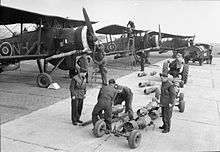
Later use
Towards the end of the war, No. 119 Squadron RAF operated Swordfish Mark IIIs, fitted with centimetric radar, from airfields in Belgium. Their main task was to hunt at night for German midget submarines in the North Sea and off the Dutch coast.[33] The radar was able to detect ships at a range of around 25 miles (40 km).[34] One of the aircraft operated by 119 Squadron in this role survives and is part of the collection of the Imperial War Museum (see Surviving aircraft).
By 1945, there were a total of nine frontline squadrons equipped with the Swordfish.[20] Overall, Swordfish-equipped units had accounted for 14 U-boats destroyed. The Swordfish was intended to be replaced by the Fairey Albacore, also a biplane, but it outlived its intended successor, and was succeeded by the Fairey Barracuda monoplane torpedo bomber. Operational sorties of the Swordfish continued into January 1945, the last active missions are believed to have been anti-shipping operations conducted off the coast of Norway by FAA Squadrons 835 and 813, where the Swordfish's manoeuverability was essential.[35] On 21 May 1945, the last operational squadron, 836 Naval Air Squadron, which had last been engaged in providing resources for the MAC ships, was disbanded shortly following the fall of Germany and the end of the Second World War in Europe.[36] In the summer of 1946, the last training squadron equipped with the type was disbanded, after which only a few examples remained in service to perform sundry duties at a few Naval Air Stations.[37]
Variants
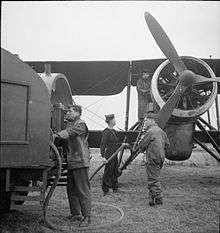
- Swordfish I
- First production series.
- Swordfish I
- Version equipped with floats, for use from catapult-equipped warships.
- Swordfish II
- Version with metal lower wings to enable the mounting of rockets, introduced in 1943.
- Swordfish III
- Version with added large centrimetric radar unit, introduced in 1943.
- Swordfish IV
- Last serial built version (production ended in 1944) with an enclosed cabin for use by the RCAF
Operators
 Australia
Australia
- Royal Australian Air Force
- Six aircraft were used by No. 25 Squadron RAAF in 1942.[38]
- Royal Australian Air Force
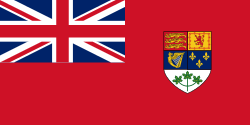 Canada
Canada
_crowned.svg.png) Italy
Italy
- Regia Aeronautica
- Swordfish 4A was first to fall into Italian hands in the aftermath of the Battle of Taranto, in poor condition.
- Swordfish K8422 of HMS Eagle was shot down and captured during a raid on Maritza airfield, Rhodes on 4 September 1940. Evaluated at Guidonia Test Centre and kept serviceable until mid-1941 with spare parts coming from captured Swordfish K8422 (4H).
- Swordfish P4127 (coded 4F) of 820 squadron on HMS Ark Royal, involved in bombing raid on Cagliari, Sardinia. Hit by ground fire, it force-landed on the enemy airfield at Elmas on 2 August 1940. The crew were taken prisoner and the aircraft captured intact. Caproni repaired it locally and fitted it with an Alfa Romeo 125 engine. It was taken to the Stabilimento Costruzioni Aeronautiche in Guidonia on 27 February 1941. It was still listed as being there on 6 April 1942.[39]
- Regia Aeronautica
 Netherlands
Netherlands
- Royal Netherlands Navy
- Dutch Naval Aviation Service in exile in the United Kingdom
- Royal Netherlands Navy
.svg.png) Spain
Spain
- Swordfish W5843 of 813 squadron at North Front, Gibraltar lost its bearings during an anti-submarine sweep and force landed between Ras el Farea and Pota Pescadores, in Spanish Morocco, on 30 April 1942. The crew were all interned. The final fate of the aircraft is not known.[39]
- Swordfish P4073 of 700 squadron of HMS Malaya ran out of fuel whilst shadowing the German battleship Scharnhorst on 8 March 1941.[40][41] Aircraft and crew were interned in Spain. The Swordfish was put on the strength of the Spanish air force as HR6-1 on 6 December 1943 with 54 Escuadrilla, Puerto de le Cruz, Tenerife, Canary Islands. Retired March 1945 at Las Palmas, Gran Canaria.[39]
 United Kingdom
United Kingdom
- Royal Air Force[42]
- No. 8 Squadron RAF
- No. 119 Squadron RAF
- No. 202 Squadron RAF
- No. 209 Squadron RAF
- No. 273 Squadron RAF
- No. 613 Squadron RAF
- No. 3 Anti-Aircraft Co-operation Unit (No. 3 AACU), Malta and Gibraltar
- No. 4 Anti-Aircraft Co-operation Unit (No. 4 AACU), Singapore
- 9 (Pilot) Advanced Flying Unit
- Royal Navy Fleet Air Arm (prior to May 1939 part of RAF)
- 700 Squadron
- 705 Squadron (float-equipped aircraft from the battlecruisers Repulse and Renown)
- 771 Squadron
- 810 Squadron
- 811 Squadron
- 812 Squadron
- 814 Squadron
- 815 Squadron
- 816 Squadron
- 817 Squadron, transferred to South Africa in 1945
- 818 Squadron
- 819 Squadron
- 820 Squadron
- 821 Squadron
- 822 Squadron
- 823 Squadron
- 824 Squadron
- 825 Squadron
- 835 Squadron
- 836 Squadron
- 838 Squadron
- Royal Air Force[42]
Surviving aircraft
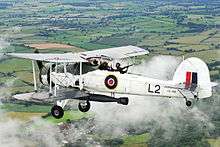
.jpg)
- Swordfish Mk.I W5856, Swordfish Mk.II LS326, Swordfish Mk.III NF389
- These three aircraft form part of the Royal Navy Historic Flight; W5856 and LS326 are in flying condition; NF389 is being restored to airworthy condition by the Flight.
- Swordfish Mk.II, HS618
- Displayed at the Fleet Air Arm Museum.[43]
- Swordfish Mk.II, NS122
- This aircraft is at the Canada Aviation and Space Museum. Note that "NS122" is a fictitious identity.
- Swordfish Mk.III, NF370
- Displayed at the Imperial War Museum Duxford, this aircraft was built in 1944. it was operated by No. 119 Squadron RAF, which was given the task of patrolling the North Sea in search of German torpedo boats and midget submarines. It has been at the Imperial War Museum Duxford since 1986. In 1998, a restoration project began that returned the airframe to an airworthy condition, although was fitted with a non-functional Pegasus engine.[34]
- Swordfish Mk.III, HS554 construction number F/B 3527A
- This aircraft is in flying condition and is registered as C-GEVS. It is operated by Vintage Wings of Canada, based in Gatineau, Quebec, Canada
- Swordfish Mk.IV, HS469
- Originally a Mk.II, but converted to a Mk.IV, this aircraft is on display at the Shearwater Aviation Museum in Nova Scotia. It was restored to airworthy condition and flew once, in 1992.
- Swordfish Mk.IV, HS491
- This is part of the collection of the Malta Aviation Museum and is currently awaiting restoration.
- Swordfish Mk.IV, HS503
- This aircraft is stored in Staffordshire awaiting Restoration.
- Swordfish Mk.IV, HS517
- This aircraft is preserved in London, Ontario, Canada.
Specifications (Swordfish I)

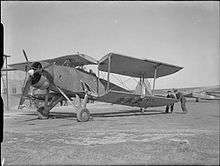
Data from Fairey Aircraft since 1915,[44] The Fairey Swordfish Mks. I-IV[45]
General characteristics
- Crew: Three (pilot, observer, and radio operator/rear gunner; observers position frequently replaced with auxiliary fuel tank)
- Length: 35 ft 8 in (10.87 m)
- Wingspan: 45 ft 6 in[46] (13.87 m)
- Height: 12 ft 4 in (3.76 m)
- Wing area: 607 ft² (56.4 m²)
- Empty weight: 4,195 lb (1,900 kg)
- Loaded weight: 7,580 lb [47] (3,450 kg)
- Powerplant: 1 × Bristol Pegasus IIIM.3 radial engine, 690 hp (510 kW)
Performance
- Maximum speed: 143 mph with torpedo at 7,580 lb (230 km/h, 124 knots) at 5,000 ft (1,450 m)
- Range: 522 mi (840 km, 455 nmi) normal fuel, carrying torpedo[48]
- Endurance: 5.5 hr
- Service ceiling: 16,500 ft at 7,580 lb[47] (5,030 m)
- Rate of climb: 870 ft/min (4.42 m/s) at sea level at 7,580 lb. (690 ft/min (3.5 m/s) at 5000 ft (1,524 m) at 7,580 lb)
Armament
- Guns:
- 1 × fixed, forward-firing .303 in (7.7 mm) Vickers machine gun in upper right fuselage, breech in cockpit, firing over engine cowling
- 1 × .303 in (7.7 mm) Lewis or Vickers K machine gun in rear cockpit
- Rockets: 8 × "60 lb" RP-3 rocket projectiles (Mk.II and later)
- Bombs: 1 × 1,670 lb (760 kg) torpedo or 1,500 lb (700 kg) mine under fuselage or 1,500 lb total of bombs under fuselage and wings.
See also
- Related development
- Aircraft of comparable role, configuration and era
- Related lists
References
Citations
- 1 2 3 Stott 1971, p. 21.
- ↑ Stott 1971, pp. 21–22.
- 1 2 3 4 5 6 7 Stott 1971, p. 22.
- ↑ Stott 1971, pp. 22–23.
- 1 2 3 4 5 6 7 8 9 Stott 1971, p. 23.
- ↑ Stott 1971, p. 24.
- ↑ Stott 1971, pp. 24–25.
- 1 2 3 4 Stott 1971, p. 25. Blackburn built Swordfish were nicknamed 'Blackfish'.
- 1 2 3 4 Stott 1971, p. 26.
- ↑ Bishop, Chris, 2002, The Encyclopedia of Weapons of World War II Metrobooks ISBN 1-58663-762-2 (p. 403)
- ↑ Lamb 2001
- 1 2 Emmott, Norman W. "Airborne Torpedoes". United States Naval Institute Proceedings, August 1977.
- ↑ Campbell 1985, p. 87.
- ↑ Smith, p. 66.
- ↑ Wragg 2003, p. 142.
- ↑ Stott 1971, pp. 23–24.
- ↑ Stott 1971, pp. 26, 28.
- 1 2 3 4 5 6 7 Stott 1971, p. 28.
- ↑ Stott 1971, pp. 28, 31.
- 1 2 3 4 5 6 7 8 9 10 11 Stott 1971, p. 38.
- ↑ Kemp, pp. 199–200.
- ↑ Harrison 2001, p. 9.
- ↑ Garzke & Dulin, pp. 229–230.
- 1 2 3 4 Stott 1971, p. 37.
- ↑ Stott 1971, pp. 37–38.
- ↑ Kennedy 2002, p. 166.
- ↑ Kennedy 2002, pp. 112, 165.
- 1 2 3 4 5 6 7 8 Stott 1971, p. 31.
- ↑ Stott 1971, pp. 31, 34.
- 1 2 3 4 5 6 Stott 1971, p. 34.
- ↑ Stott 1971, pp. 34, 37.
- ↑ Lowry and Wellham 2000, p. 92.
- ↑ "ROYAL AIR FORCE COASTAL COMMAND, 1939-1945.". Imperial War Museum. Retrieved 9 January 2015.
- 1 2 Parsons, Gary (2005). "Back in Black". air-scene uk. Retrieved 7 January 2015.
- ↑ Wragg 2005, pp. 127–131.
- ↑ Stott 1971, pp. 38–40.
- ↑ Stott 1971, p. 40.
- ↑ ADF-Serials RAAF Fairey Swordfish Mk.I
- 1 2 3 "Fleet Air Arm Archive 1939-45: Capture Fleet Air Arm Aircraft." fleetairarmarchive.net. Retrieved: 16 August 2010.
- ↑ HMS MALAYA - Queen Elizabeth-class 15in gun Battleship including Convoy Escort Movements
- ↑ Sturtivant, p. 65.
- ↑ Thomas 1998, pp. 73–77.
- ↑ Fleet Air Arm Museum: Fairey Swordfish II (HS618)
- ↑ Taylor 1974, p. 259.
- ↑ Stott 1971, p. 43.
- ↑ Folded Span: 17 ft 3 in (5.26 m)
- 1 2 Taylor 1974, p. 259
- ↑ Taylor 1974, p. 260: 1,030 mi (1,660 km,896 nmi) reconnaissance with no bombs and extra fuel
Bibliography
- Brown, Eric, CBE, DCS, AFC, RN.; William Green and Gordon Swanborough. "Fairey Swordfish". Wings of the Navy, Flying Allied Carrier Aircraft of World War Two. London: Jane's Publishing Company, 1980, pp. 7–20. ISBN 0-7106-0002-X.
- Campbell, John. Naval Weapons of World War II. Annapolis, Maryland: Naval Institute Press, 1985. ISBN 0-87021-459-4.
- Harrison, W.A. Fairey Swordfish and Albacore. Wiltshire, UK: The Crowood Press, 2002. ISBN 1-86126-512-3.
- Harrison, W.A. Fairey Swordfish in Action (Aircraft Number 175). Carrollton, Texas: Squadron/Signal Publications, Inc., 2001. ISBN 0-89747-421-X.
- Harrison, W.A. Swordfish at War. Shepperton, Surrey, UK: Ian Allan Publishing Ltd., 1987. ISBN 0-7110-1676-3.
- Harrison, W.A. Swordfish Special. Shepperton, Surrey, UK: Ian Allan Publishing Ltd., 1977. ISBN 0-7110-0742-X.
- Kilbracken, Lord. Bring Back My Stringbag: A Swordfish Pilot At War. London: Pan Books Ltd, 1980. ISBN 0-330-26172-X. First published by Peter Davies Ltd, 1979.
- Lamb, Charles. To War in a Stringbag. London: Cassell & Co., 2001. ISBN 0-304-35841-X.
- Lowe, Malcolm V. Fairey Swordfish: Plane Essentials No.3. Wimborne, UK: Publishing Solutions (www) Ltd., 2009. ISBN 978-1-906589-02-8.
- Lowry, Thomas P. and John Wellham.The Attack on Taranto: Blueprint for Pearl Harbor. London: Stackpole Books, 2000. ISBN 0-8117-2661-4.
- Kemp, P.K. Key to Victory: The Triumph Of British Sea Power In World War II. New York: Little, Brown, 1957.
- Kennedy, Ludovic. Pursuit: The Sinking of the Bismarck. Bath, UK: Chivers Press, 2002. ISBN 978-0-7540-0754-8.
- Smith, Peter C. Dive Bomber!. Annapolis, Maryland: Naval Institute Press, 1982. ISBN 978-0-87021-930-6.
- Stott, Ian G. The Fairey Swordfish Mks. I-IV (Aircraft in Profile 212). Windsor, Berkshire, UK: Profile Publications, 1971. No ISBN.
- Sturtivant, Ray. The Swordfish Story. London: Cassell & Co., 1993 (2nd Revised edition 2000). ISBN 0-304-35711-1.
- Taylor, H.A, Fairey Aircraft since 1915. London: Putnam & Company Ltd., 1974. ISBN 0-370-00065-X.
- Thetford, Owen. British Naval Aircraft Since 1912. London: Putnam, Fourth edition, 1978. ISBN 0-370-30021-1.
- Thetford, Owen. British Naval Aircraft Since 1912. London: Putnam Aeronautical Books, 1994. ISBN 0-85177-861-5.
- Thomas, Andrew. "Light Blue 'Stringbags': The Fairey Swordfish in RAF Service". Air Enthusiast, No. 78, November/December 1998, pp. 73–77. Stamford, UK: Key Publishing. ISSN 0143-5450.
- Wragg, David. The Escort Carrier in World War II. Barnsley, UK: Pen & Sword Books, 2005. ISBN 1-84415-220-0.
- Wragg, David. Stringbag: The Fairey Swordfish at War. Barnsley, UK: Pen and Sword Books, 2005. ISBN 1-84415-130-1.
- Wragg, David. Swordfish: The Story of the Taranto Raid. London: Weidenfeld and Nicolson, 2003. ISBN 0-297-84667-1.
External links
| Wikimedia Commons has media related to Fairey Swordfish. |
- Swordfish Story of the Torpedoing of the Bismarck
- "Stringbag Plus" a 1946 Flight article on flying the Swordfish